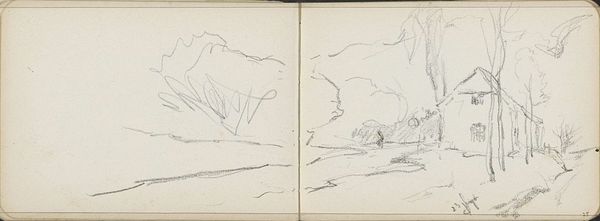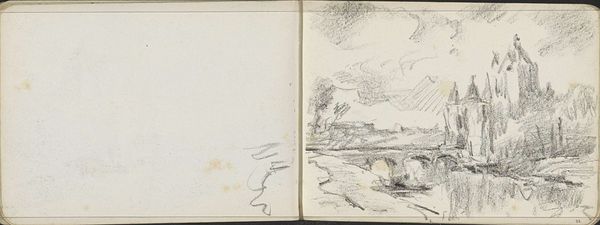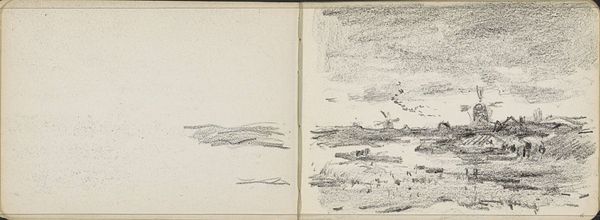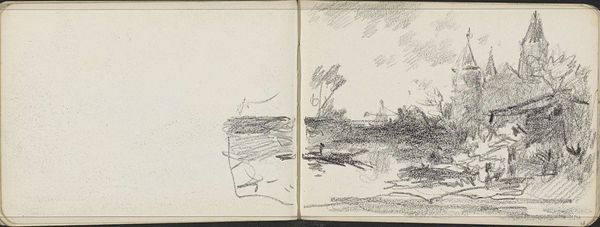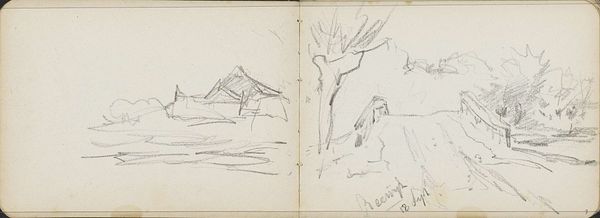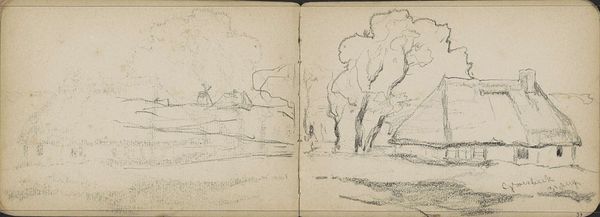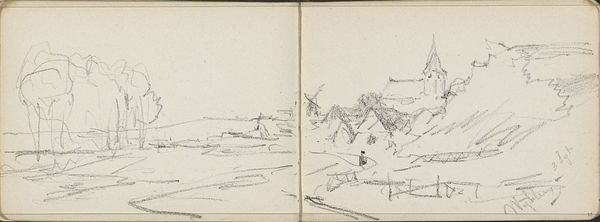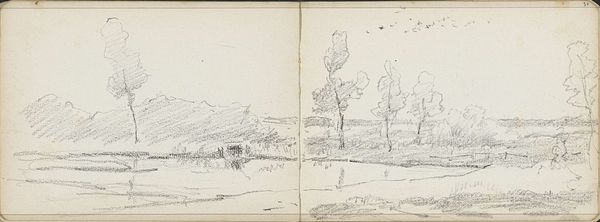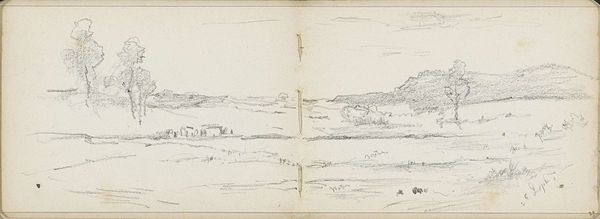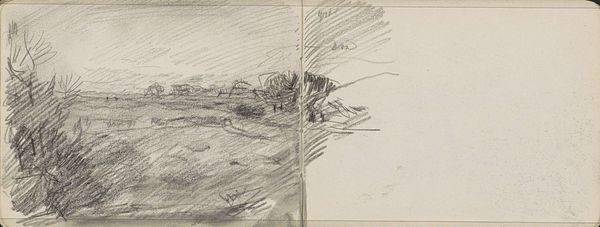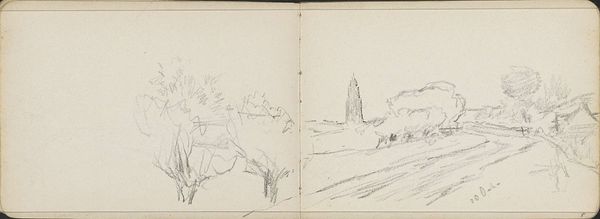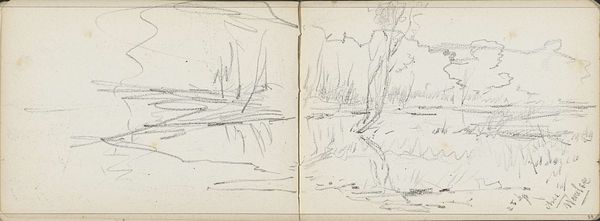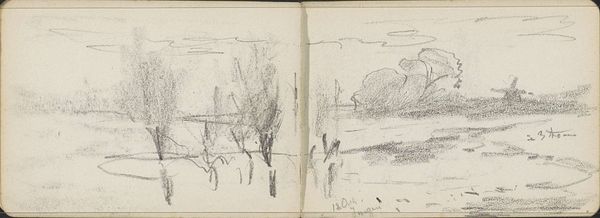
Dimensions: height 116 mm, width 162 mm
Copyright: Rijks Museum: Open Domain
Editor: This is "Gezicht op Elst met de toren van de Werenfridus," a pencil drawing by Willem Cornelis Rip, created sometime between 1905 and 1910. It’s a quick landscape sketch in what looks like a personal sketchbook, and I’m curious to know what stands out to you in terms of its meaning or artistic intention? Curator: As a materialist, I'm most interested in the sketch's production: the direct application of pencil to paper, the artist’s hand capturing a fleeting moment. Note how Rip chose inexpensive, portable materials, a sketchbook and pencil – readily available and accessible. This directly links the artistic process to the everyday life of the artist. Do you think that suggests anything about Rip’s audience or artistic aspirations? Editor: Perhaps he wasn’t intending for this to be displayed at all! It was more of a personal study? Curator: Exactly! The immediacy of the sketch subverts traditional notions of "high art." The labor involved is evident – the repetitive strokes, the visible process of building form with simple graphite. The sketch acts as a record of the artist's interaction with the physical world, bypassing the need for elaborate techniques or expensive materials. Consider the social context. At the turn of the century, industrialization was rapidly changing the landscape. This drawing can be seen as a form of visual record, almost an act of preserving a vanishing rural life. How does this contrast with highly finished, mass-produced art objects of the period? Editor: It feels much more authentic, I guess, closer to the real experiences of people at the time, unlike a grand historical painting. Curator: Precisely. Rip's sketch is significant not for its refined aesthetic qualities, but for what it reveals about artistic labor, material culture, and the relationship between art and everyday life in a specific historical moment. Editor: That makes me look at it differently, not just as a simple landscape but as a document of a time and place. Curator: And a product shaped by readily accessible materials! Examining the means of its production helps us rethink what art can be.
Comments
No comments
Be the first to comment and join the conversation on the ultimate creative platform.
